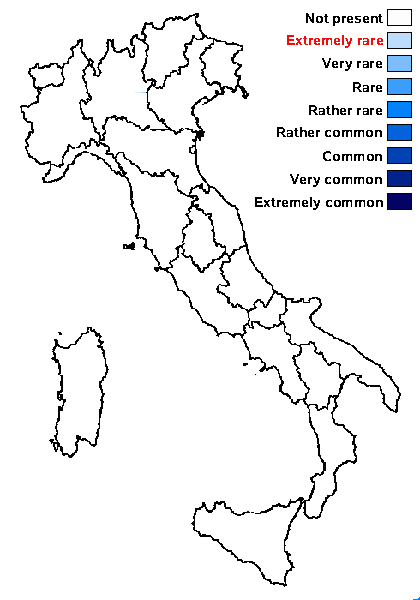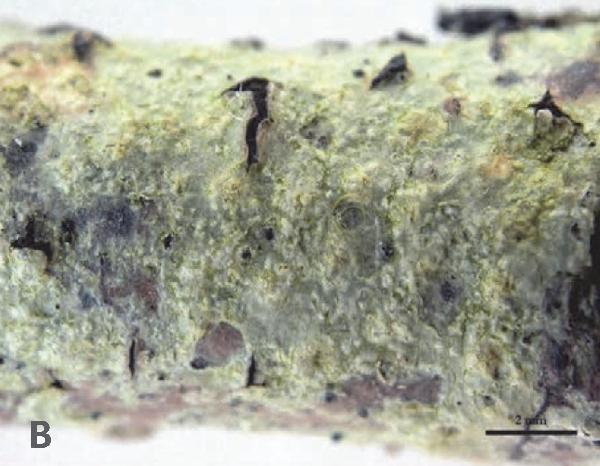Pertusaria plombii B. de Lesd.
Bull. Soc. bot. Fr., 95: 197, 1948.
Synonyms:
Distribution:
Description: Thallus crustose, thinly episubstratic, smooth or faintly rugose, rarely weakly rinose, yellowish, or pale grey in shade-forms, without a distinct prothallus. Apothecia perithecioid, immersed into 0.8-1 mm wide, yellowish fertile warts (1-2 per wart), which are flattened at top and not constricted at base, opening by a pale, punctiform dot. Epithecium colourless, without crystals, K-; hymenium colourless, 100-225 μm high; paraphyses branched, 1.5-25. μm thick, the apical cells not swollen; hypothecium colourless, 15-35 μm high. Asci (6-)8-spored, cylindrical, the apex with a broad ocular chamber, the outer sheath K/I+ blue, otherwise K/I-, with an inner extensible layer, Pertusaria-type, with usually uniseriately arranged spores. Ascospores 1-celled, hyaline, ellipsoid, (30-)40-60(-70) x (15-)20-28(-32) μm, double-walled, the wall smooth, 2-4 μm thick laterally, often thicker at apices. Photobiont chlorococcoid. Spot tests: thallus (at least the fertile warts) K+ jellow, C+ orange, KC+ orange, P- or P+ orange, UV+ orange. Chemistry: thiophaninic acid, 2,4-dichloronorlichexanthone, plus other unknown xanthones.Note: a long-forgotten epiphytic species, known from the Iberian Peninsula and western France, growing on branches of broad-leaved and coniferous trees. For further details see Beudin (2023). To be looked for in Tyrrhenian Italy.
Growth form: Crustose
Substrata: bark
Photobiont: green algae other than Trentepohlia
Reproductive strategy: mainly sexual
Most common in areas with a humid-warm climate (e.g. most of Tyrrenian Italy)

Predictive model
Growth form: Crustose
Substrata: bark
Photobiont: green algae other than Trentepohlia
Reproductive strategy: mainly sexual
Most common in areas with a humid-warm climate (e.g. most of Tyrrenian Italy)

Predictive model


